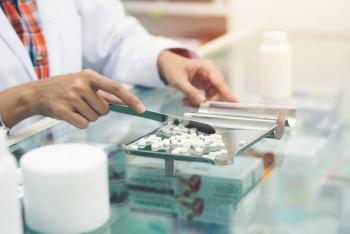
Informed Pharmacists Can Reduce Barriers to Naloxone in Rural Communities
Regardless of naloxone availability, rural pharmacies can serve as an educational resource for individuals seeking access to the medication.
Despite increased access to naloxone, many individuals in rural communities continue to face barriers to obtaining the medication, according to a study published in JAMA Network Open.
However, informed pharmacists can serve as an educational resource, even if their pharmacies do not have the medication in stock.
Ongoing efforts to expand prescribing methods through the United States have helped to improve naloxone accessibility. In Georgia, specifically, a standing order decrees that any individual may obtain naloxone from a licensed pharmacy without a prescription. Despite the standing order, pharmacies have been slow to adopt stocking naloxone and dispensing the medication, the study authors noted.
This cross-sectional study assessed the availability of naloxone, pharmacists’ awareness of the standing order, and the cost of the drug from chain and independent pharmacies in legislatively designated rural counties in Georgia.
From May 2019 to August 2019, trained researchers acting as “secret shoppers” posed as patients and called pharmacists to ask series of questions about naloxone.
Of the 364 pharmacies included in the study, 199 claimed to have the medication in stock. Of the 164 pharmacists who responded, 123 (75.0%; 95% CI, 67.7%-81.4%) referred callers to a chain store, 19 (11.6%; 95% CI, 7.1%-17.5%) referred callers to another specific retail store, 15 (9.1%; 95% CI, 5.2%-14.6%) were unaware of another pharmacy that carried naloxone, and 7 (4.3%; 95% CI, 1.7%-8.6%) gave vague responses.
According to the study, pharmacists who reported having naloxone in stock were asked whether a prescription was necessary. Of the 259 pharmacists asked, 122 (47.1%; 95% CI, 40.9%-53.4%) gave the correct information, 123 (47.5%; 95% CI, 41.3%-53.8%) said a prescription was required, 8 (3.1%; 95% CI, 1.3%-6.0%) said they were unsure, and 6 (2.3%; 95% CI, 0.9%-5.0%) said that a prescription was needed sometimes.
The mean cash price quote for naloxone, with no discounts or insurance applied, was $131.04, with a range of $35.98 to $300, the study found.
“These findings suggest that rural communities face additional barriers related to misinformation and varying costs,” the study authors wrote. “Despite these barriers, pharmacists can provide their patients with high-quality care, even if they cannot directly provide naloxone.”
References:
1. Nguyen JL, Gilbert LR, Beasley L, et al. Availability of naloxone at rural Georgia pharmacies, 2019. JAMA Network Open. 2020. Doi: 10.1001/jamanetworkopen.2019.21227
Newsletter
Pharmacy practice is always changing. Stay ahead of the curve with the Drug Topics newsletter and get the latest drug information, industry trends, and patient care tips.




